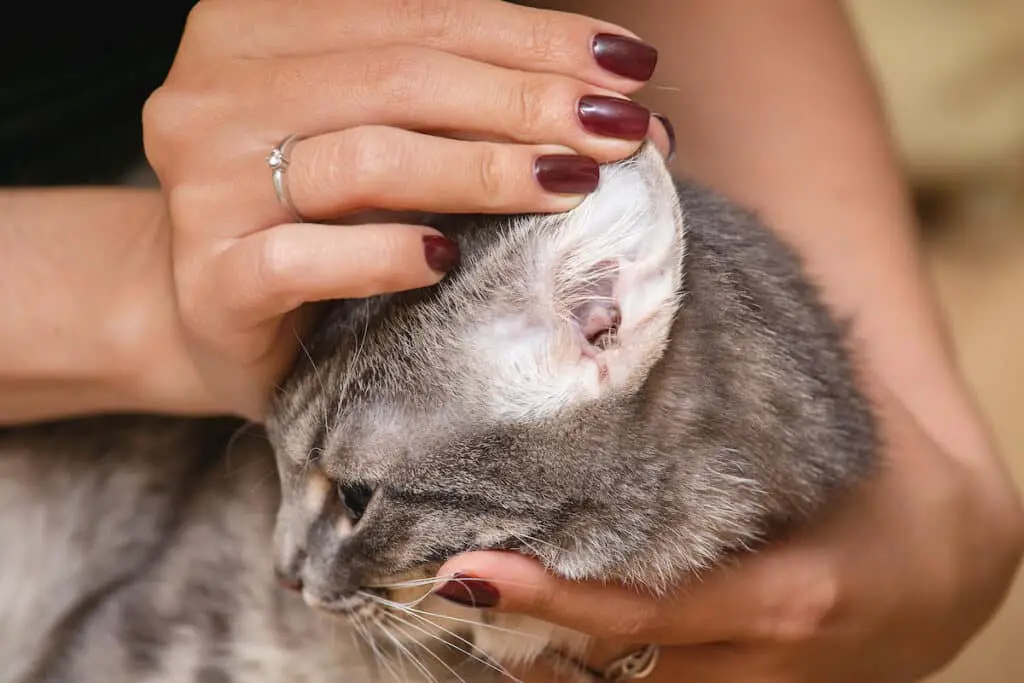Almost all cat ear mite infections are caused by the Otodectes cynotis species. This is the most common species of ear mite in veterinary medicine.
Symptoms
Often, the symptoms of a cat ear mite infestation mimic other types of ear infections. It is important for you to understand the difference between the two and how to determine if your cat is infected.
If you notice your cat shaking its head, scratching its ear or scratching at its ear flap, you should seek help from a veterinarian. These symptoms are often indicative of an ear infection, and can be very painful.
If your cat is scratching a lot, you may find that it is scratching to remove excess fluid. You can also see wax buildup in the ear, or spots that look like coffee grounds. These are signs that ear mites are in the cat’s ears.
It is important to clean the cat’s ears and carpets regularly to prevent re-infestation. Also, make sure that all animals in your home are free of ear mites.
Symptoms of an ear infection in a cat can range from a foul odor to a black or yellow discharge. You should see a vet for a diagnosis, and he or she will recommend a treatment. The symptoms will disappear after treatment is complete.
Diagnosis
Having a cat with ear mites can cause a lot of discomfort. This type of ear infection is caused by small, slender ear mites that live in your cat’s ear canals. If you notice your cat scratching at the ears more often, it may be time to consult with a veterinarian.
Typically, the ear mites will affect both ears. The treatment for ear mites is very different than the treatment for other types of ear infections. Depending on the severity of the infection, it may be necessary to repeat the treatment several times.
When you bring your cat to the vet’s office, you will need to provide a few pieces of information about your pet. The first is your cat’s history. Tell the vet if you have noticed any weird behaviors or symptoms, and when they started to appear.
The vet will then use an otoscope to examine your cat’s ear. They will look for moving white specks, and may take a sample of ear wax and discharge. The sample will be swabbed and examined under a microscope. The vet will then determine the cause of the ear mites and recommend a course of treatment.
Treatment
Several ear medications are licensed for use on pets. These medications are designed to kill adult and larval forms of ear mites. The medication is applied to the ear and may also be applied to the skin outside the ear.
It is important to take your cat to the vet when you suspect that your pet is infested with ear mites. The vet will be able to diagnose the problem and recommend a treatment plan.
If you see your cat scratching and rubbing his or her ear, there is a chance that the mites are present. This is because cats will scratch their ears to remove the parasites. If the scratching becomes too aggressive, the cat may develop an infection from mutilation. It is also possible that the cat will develop sores and thickened skin.
Your veterinarian may recommend several different ear medications. These medications are typically prescribed for two to three weeks. They work in a similar way to lice shampoo in humans. However, they are not effective in killing all of the ear mites.
Prevention
Taking steps to prevent cat ear mites is crucial to maintaining good health for your cat. They can be a source of serious ear infections, and they can be passed on to other pets.
There are several preventative medications that can help. These include Revolution, Bravecto Plus, and Advantage Multi. They are designed to kill ear mites before they have a chance to reproduce. However, these medications can only protect against new cases.
Having a regular veterinarian appointment is important to preventing cat ear mites. Your veterinarian may recommend anti-parasite injections or other diagnostics, and they may also prescribe medication for other household pets. This will help to keep the ear mites from re-infesting your home.
In addition to having regular veterinarian visits, cleaning your home is important. Make sure that all bedding and toys are clean. Also, vacuum frequently to reduce the number of mites.
In addition to cleaning your home, you should also make sure to have a clean scratching post. If your cat is scratching too much, this could lead to a more serious infection.














